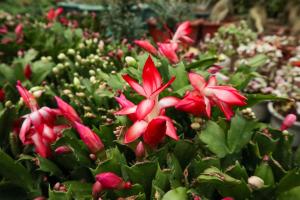Introduction
Mums, or chrysanthemums, are beautiful and versatile plants that can enhance the beauty of your garden or indoor space. If you have recently bought a mum plant, then you must be wondering how to take care of it so that it blooms its best. Here is a guide on how to take care of a mum plant.
Lighting
Mum plants require adequate sunlight to grow and bloom properly. Place your mum plant where it can receive bright, indirect sunlight for at least 6 hours a day. If you keep it indoors, place it near a south-facing window. If you keep it outdoors, make sure it gets enough sunlight, but not too much, as excessive direct sunlight can damage the plant.
Watering
Watering is an essential part of taking care of a mum plant. However, overwatering can sometimes be harmful to the plant. Make sure to water your mum plant only when the soil feels dry to the touch. Water it deeply but avoid making the soil soggy. Use a well-draining pot or add drainage holes to the pot to prevent overwatering. Also, avoid watering from the top as it can harm the flowers and leaves. Instead, water from the bottom to help the plant absorb water more efficiently.
Fertilization
Mum plants need proper fertilization to stay healthy and produce vibrant flowers. Use a balanced organic or slow-release fertilizer once a month during the growing season for best results. You can apply fertilizer directly to the soil, following the package instructions, or use a liquid fertilizer by mixing it in the water. Be careful not to over-fertilize as it can harm the plant.
Pruning
Regular pruning is crucial to maintain the shape and health of your mum plant. Prune your mum plant in the spring by removing any dead or damaged branches and cutting back any overgrown stems. Also, pinch back the tips of the young shoots every two to three weeks to encourage bushier growth and more blooms.
Pests and Diseases
Like other plants, mum plants are susceptible to pests and diseases, such as aphids, spider mites, powdery mildew, and botrytis. Keep an eye on your mum plant for any signs of these problems and take prompt action to prevent them from spreading. Use organic insecticides or fungicides, or use natural remedies like neem oil, garlic spray, or soap spray.
Conclusion
Taking care of a mum plant requires basic knowledge and regular attention. With proper watering, adequate lighting, fertilization, pruning, and protection from pests and diseases, your mum plant will thrive and bloom its best. Follow these simple tips, and you will be rewarded with a healthy and beautiful mum plant.

 how many times do yo...
how many times do yo... how many planted tre...
how many planted tre... how many pine trees ...
how many pine trees ... how many pecan trees...
how many pecan trees... how many plants comp...
how many plants comp... how many plants can ...
how many plants can ... how many plants and ...
how many plants and ... how many pepper plan...
how many pepper plan...






























